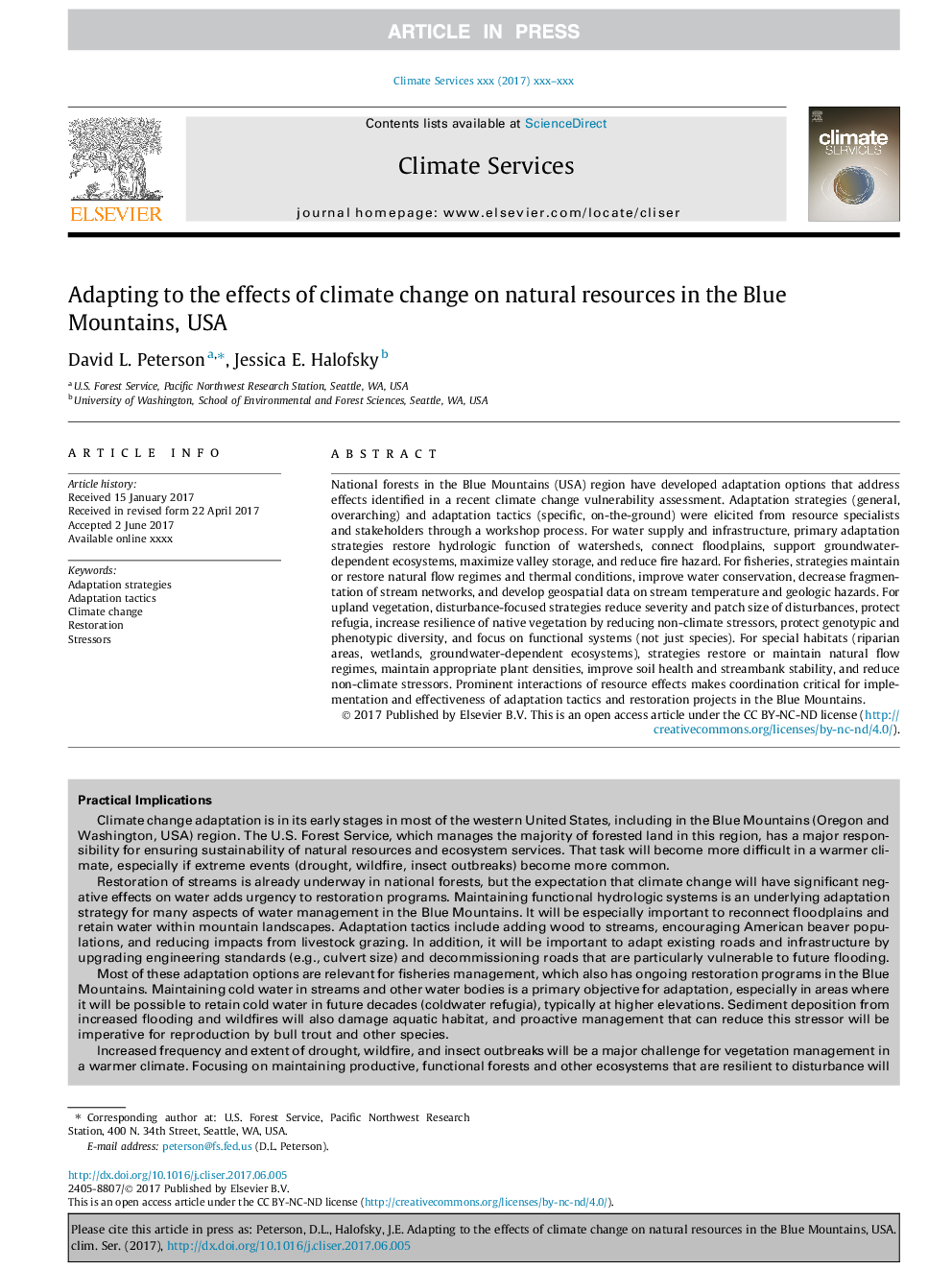| Article ID | Journal | Published Year | Pages | File Type |
|---|---|---|---|---|
| 8867276 | Climate Services | 2018 | 9 Pages |
Abstract
National forests in the Blue Mountains (USA) region have developed adaptation options that address effects identified in a recent climate change vulnerability assessment. Adaptation strategies (general, overarching) and adaptation tactics (specific, on-the-ground) were elicited from resource specialists and stakeholders through a workshop process. For water supply and infrastructure, primary adaptation strategies restore hydrologic function of watersheds, connect floodplains, support groundwater-dependent ecosystems, maximize valley storage, and reduce fire hazard. For fisheries, strategies maintain or restore natural flow regimes and thermal conditions, improve water conservation, decrease fragmentation of stream networks, and develop geospatial data on stream temperature and geologic hazards. For upland vegetation, disturbance-focused strategies reduce severity and patch size of disturbances, protect refugia, increase resilience of native vegetation by reducing non-climate stressors, protect genotypic and phenotypic diversity, and focus on functional systems (not just species). For special habitats (riparian areas, wetlands, groundwater-dependent ecosystems), strategies restore or maintain natural flow regimes, maintain appropriate plant densities, improve soil health and streambank stability, and reduce non-climate stressors. Prominent interactions of resource effects makes coordination critical for implementation and effectiveness of adaptation tactics and restoration projects in the Blue Mountains.
Related Topics
Physical Sciences and Engineering
Earth and Planetary Sciences
Atmospheric Science
Authors
David L. Peterson, Jessica E. Halofsky,
